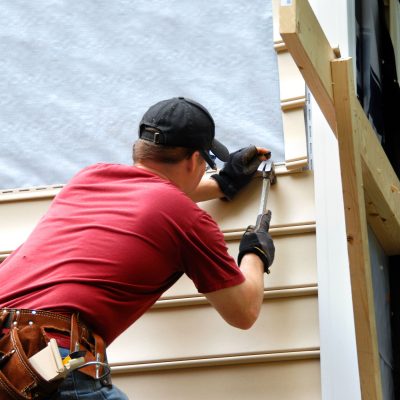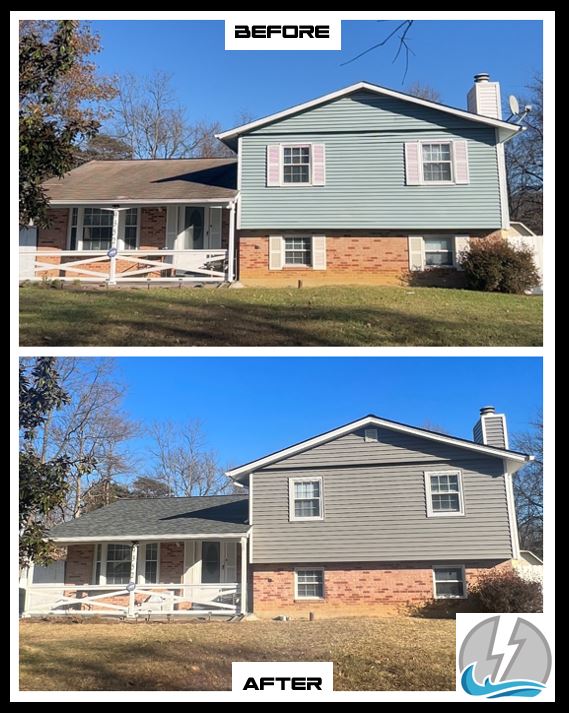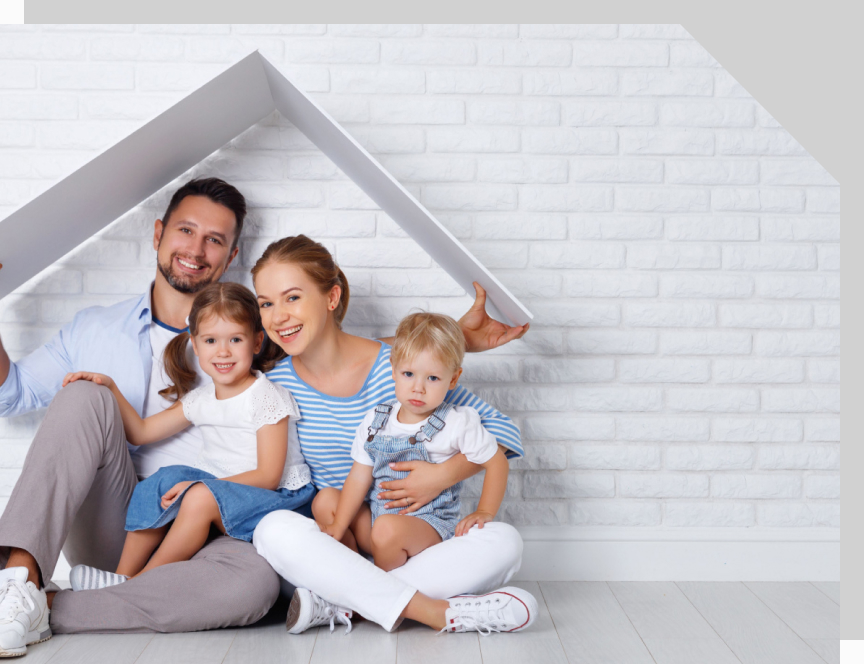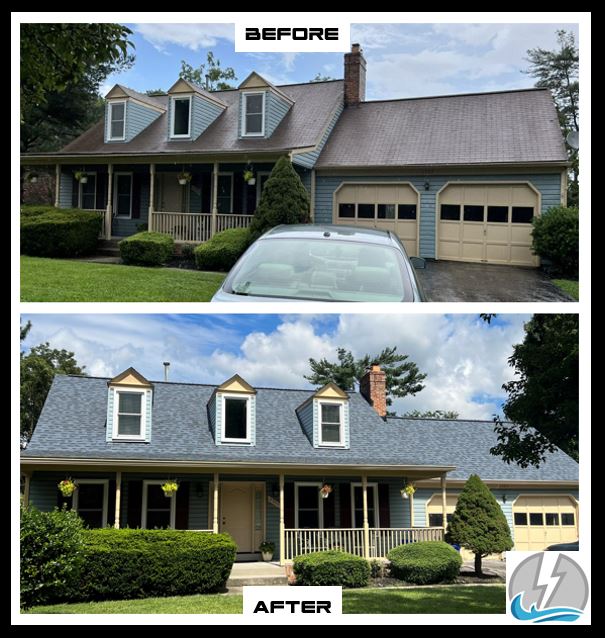High-Quality Exterior Siding Services in Maryland
Protect your home against weather, mold, pests, and more with exterior siding services from Thunder Bay Roofing. Led by experienced Edgewater, MD, roofing contractors, Nick Perz and Steve Friedman, our team provides various exterior siding options that can fit the style and function of any home. We can also install your cladding by orientation for added curb appeal or protection.
While we may not offer every type of exterior siding in this guide, you can call us to find out what types of siding we offer. Contact our Anne Arundel County siding company for your free exterior house siding services consultation by calling 410-956-7663.
Please note that at this time Thunder Bay Roofing requires a minimum of a $2,000 order when it comes to siding services.

What Is Exterior Siding?
Exterior siding is the material applied to the outer walls of a building to protect it from weather elements and enhance its appearance. It plays a vital role in insulation, weatherproofing, and overall structural integrity.
Why Choose Thunder Bay for Exterior Siding Services
At Thunder Bay Roofing, our siding specialists have more than 20 years of combined experience installing and replacing a wide variety of siding types. We offer free consultations with qualified siding experts, giving you peace of mind before you commit to any of our exterior siding services. We only use quality, durable materials for our siding options. We’ll give you honest evaluations based on style, location, and functionality to ensure your exterior house siding option works for your home.

Exterior Siding Styles
When it comes to siding, there are various siding types available. Types of siding styles include:
- Horizontal Siding: Horizontal siding is one of the most popular styles. Panels run parallel to the ground, creating a clean and streamlined look. It’s available in a variety of materials, including vinyl, wood, fiber cement, and metal.
- Vertical Siding: Vertical siding features boards that run vertically from the roofline to the foundation. It can add a touch of drama and sophistication to a home’s exterior. Vertical siding is also a good choice for areas with high winds, as it provides less resistance than horizontal siding.
- Lap Siding: Lap siding is a classic style that features horizontal boards that overlap slightly. This creates a layered effect that adds visual interest to a home’s exterior. Lap siding is available in a variety of materials, including wood, vinyl, fiber cement, and metal.
- Shiplap Siding: Shiplap siding is a type of lap siding that features boards with a slight rabbet (groove) at the top edge that fits over a corresponding tongue (ridge) on the board below. This creates a clean, finished look that is similar to tongue-and-groove flooring.
- Board and Batten Siding: Board and batten siding feature vertical boards (boards) with flat boards (battens) covering the seams between them. This creates a rustic and timeless look.
- Panel Siding: Panel siding features large, flat sheets of material that are applied to the exterior walls of a home. It’s a quick and easy way to cover a large surface area. Panel siding is available in a variety of materials, including vinyl, fiber cement, and metal.
- Shake Siding: Shake siding features small, rectangular shingles that are applied in a staggered pattern. It creates a rustic and textured look. Shake siding is traditionally made from wood, but it’s also available in vinyl and fiber cement.
- Dutch Lap Siding: Dutch lap siding is a type of lap siding that features a channel or groove at the bottom edge of each board. This channel helps to shed water and prevent moisture infiltration.
- Beveled Siding: Beveled siding features boards with edges that are cut at an angle. This creates a shadow line that adds visual interest to a home’s exterior. Beveled siding is available in a variety of materials, including wood, vinyl, and fiber cement.
Choosing the Right Exterior Siding in Maryland
When selecting exterior siding, consider the following factors:
- Climate: Choose materials that can withstand your local weather conditions.
- Budget: Determine your budget and find materials that offer the best value.
- Maintenance: Consider how much time and effort you’re willing to invest in maintenance.
- Aesthetic: Select siding that complements your home’s architectural style and personal preferences.
To learn more about your siding options, contact our Edgewater roofing contractors today by calling 410-956-7663.

Siding Materials at Thunder Bay Roofing
Vinyl Siding
Vinyl siding is a popular option for homeowners due to its affordability, durability, and low maintenance requirements. It comes in a range of colors and styles, so you can easily find a look that suits your preferences. Vinyl siding is also energy-efficient and can help you save on your energy bills.
Fiber Cement Siding
Fiber cement siding, also known as “Hardie Plank®”, Hardie board, or cement board, is a durable material made from Portland cement, fibers, sand, water, and other additives, used for residential homes. It’s a popular choice in Maryland because of its combined attributes of being long-lasting, low-maintenance, and versatility in style.
Cedar Plank Wood Siding
Cedar plank siding is a type of natural wood exterior cladding made from individual planks or boards cut from cedar. These planks are typically installed horizontally on the exterior walls of a structure, overlapping one another to create a protective barrier against the elements.
Other Siding Materials
There are various siding materials, including:
- Wood Siding
- Brick Siding
- Stone Siding
- Polymer Siding
- Asphalt Siding
- Insulated Siding
- Metal Siding
- Composite Siding
- Stucco Siding
Exterior Siding Installation Process
Proper installation of exterior siding involves several key steps to ensure longevity and performance.
- We begin by inspecting and repairing the building structure and then measuring and removing any old siding.
- We’ll apply a weather-resistant barrier, install starter strips, and attach siding panels from the bottom up, ensuring each row overlaps the one below.
- Our roofing contractors finish with trimming around windows, doors, and corners.
Siding Repairs and Maintenance
Regular siding maintenance extends the life of your siding and keeps it looking its best. Clean siding annually with a mild detergent, inspect for damage, and repaint or restain wood siding every three to seven years. Common siding repairs include:
- Filling small cracks and holes
- Replacing damaged wood due to rot or insects
- Reattaching loose panels
Timely maintenance and repairs prevent further issues and ensure the siding continues to protect your home effectively. Thunder Bay Roofing is not currently offering siding repair services.
Environmental Considerations
Choosing eco-friendly siding options helps reduce your environmental footprint. Consider materials made from recycled content and those sourced sustainably, like FSC-certified wood. Opt for durable materials that require fewer replacements over time, and insulated siding to improve energy efficiency. By making environmentally conscious choices, you can enhance your home’s sustainability and reduce its impact on the planet.
Siding Costs
Material Costs
- Vinyl Siding: $3-$8 per square foot
- Wood Siding: $5-$10 per square foot
- Metal Siding: $4-$8 per square foot
- Fiber Cement Siding: $5-$10 per square foot
- Brick Veneer: $10-$15 per square foot
- Stone Veneer: $15-$25 per square foot
Labor Costs
Labor costs can vary depending on your location, the complexity of the job, and the experience of the contractor. In general, expect to pay between $1.50 and $4.50 per square foot for labor on top of the material cost.
Other Factors
Other factors that determine siding costs include:
- Size of Your Home: The larger your home, the more siding material and labor will be required, which will increase the overall cost.
- Complexity of The Job: Homes with complex shapes or a lot of trim will require more labor to install siding, which will increase the cost.
- Removal of Existing Siding: If you need to remove your existing siding before installing new siding, this will add to the overall cost of the project.
- Permitting Fees: You may need to obtain a permit from your local municipality before installing new siding. Permitting fees can vary depending on your location.
Contact our siding contractors in Maryland today at 410-956-7663 to get your free estimate!

Frequently Asked Questions
The lifespan of exterior siding depends on the material used as well as the level of maintenance it receives. Vinyl siding can last up to 50 years, while wood siding can last up to 30 years with proper care. Be sure to talk to your contractor to learn how to properly care for your siding and extend its longevity.
Yes, most exterior siding materials can be installed year-round. However, extreme weather conditions, such as heavy rain or snow, may delay installation.
The most durable type of exterior house siding is fiber cement siding. This type of siding is made from a blend of cement, sand, and cellulose fibers, which makes it resistant to fire, insects, and rot. It can also withstand harsh weather conditions, including extreme heat and cold.
